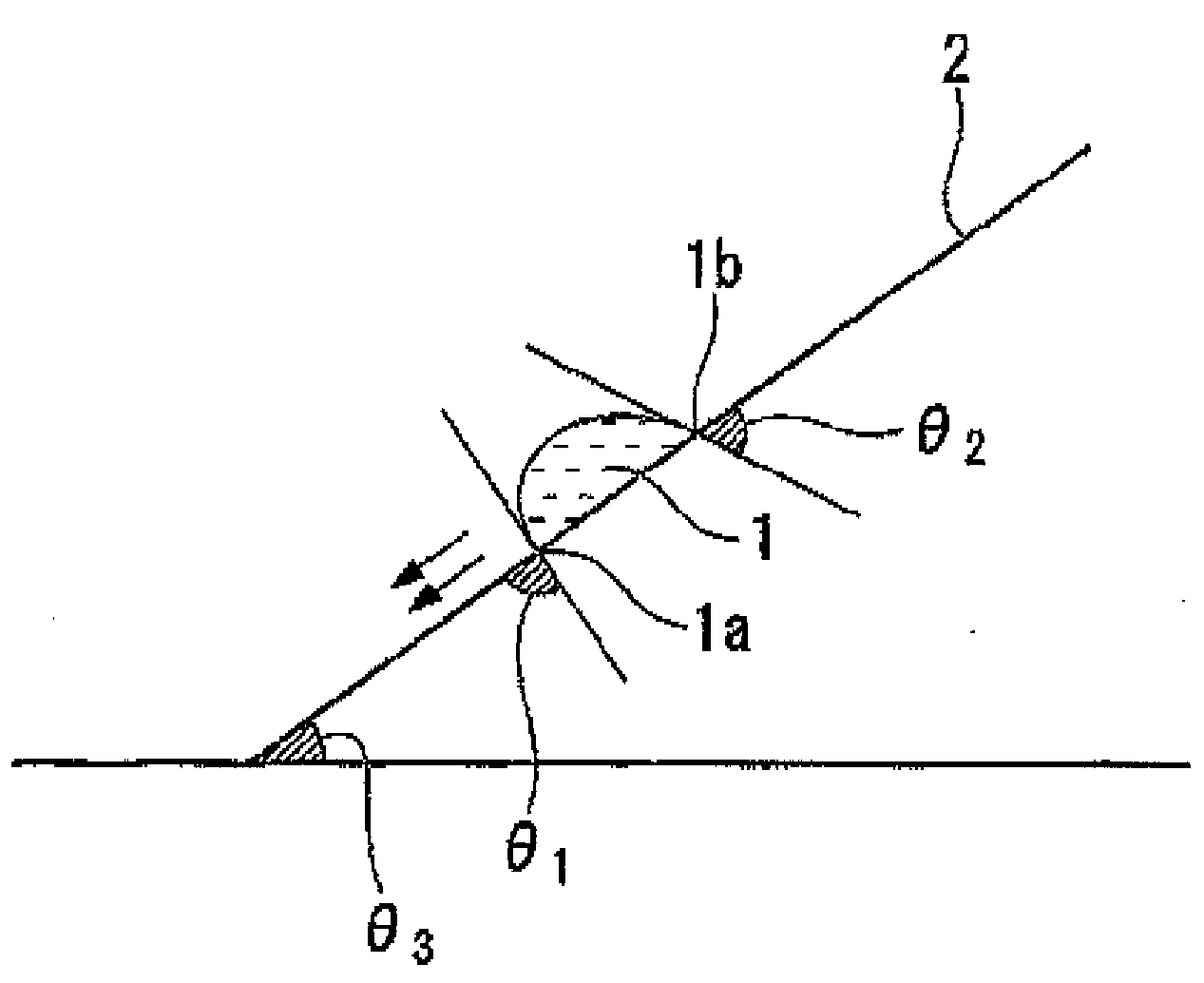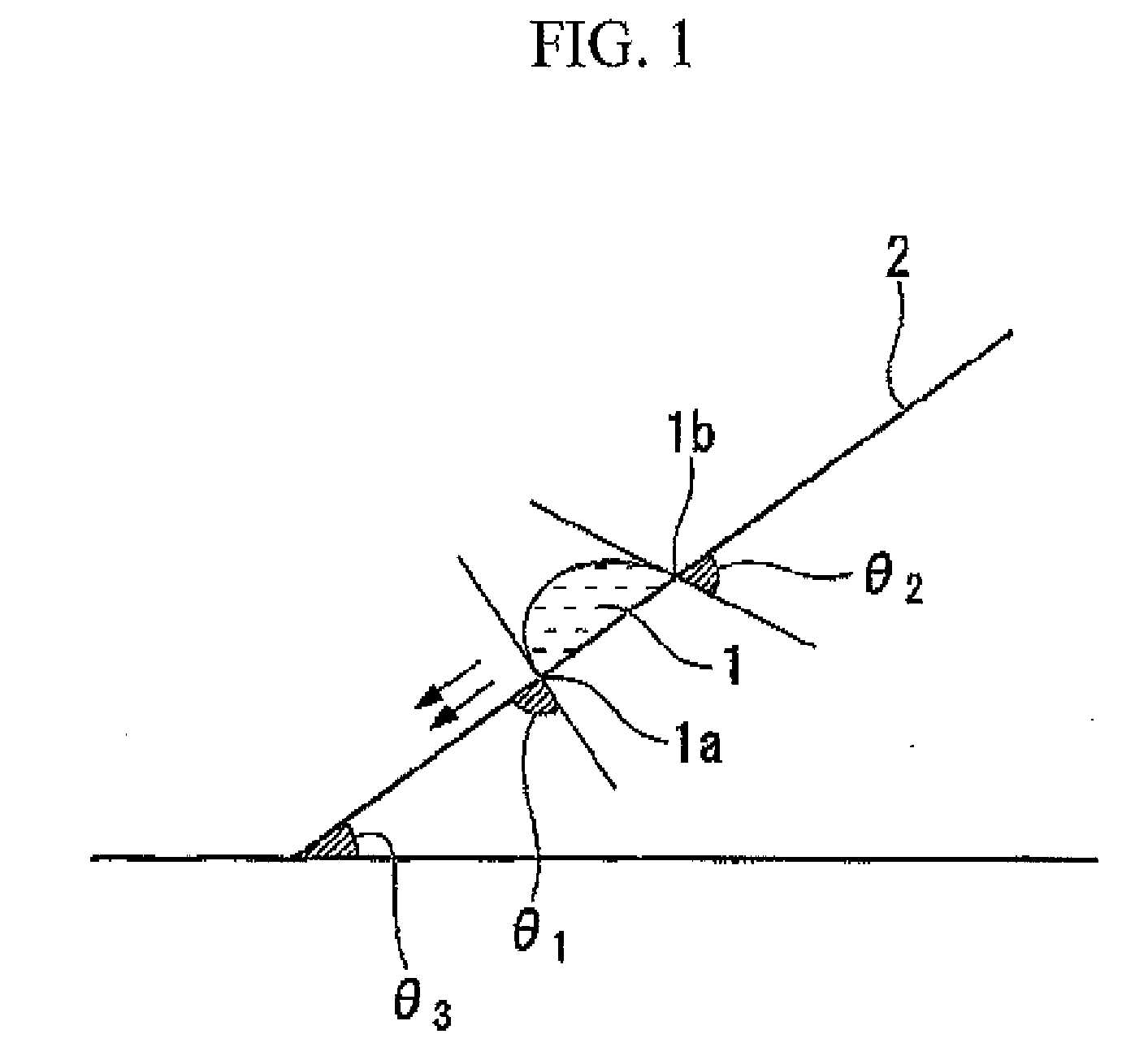Fluorine-containing compound, resist composition for immersion exposure, and method of forming resist pattern
a technology of resist composition and fluorine, which is applied in the direction of basic electric elements, electrical equipment, nuclear engineering, etc., can solve the problems of adversely affecting productivity, affecting lithography properties, and low speed, so as to reduce elution of substances, adversely affecting lithography properties, and enhancing the hydrophobicity of die resist film surfaces
- Summary
- Abstract
- Description
- Claims
- Application Information
AI Technical Summary
Benefits of technology
Problems solved by technology
Method used
Image
Examples
example 1
[0456]6 ml of a THF solution of 3.8 g (31.2 mmol) of pivaloyl chloride was dropwise added to 15 ml of a THF solution having dissolved therein 5 g (26 mmol) of 2,3,5,6-tetrafluoro-4-hydroxystyrene and 5.3 g (52 mmol) of triethylamine, in a nitrogen atmosphere at 0° C. Then, the temperature of the reaction liquid was elevated to room temperature, and the reaction liquid was stirred for 1 hour. After conducting thin-layer chromatography to confirm disappearance of the raw materials, the reaction liquid was cooled to 0° C., and water was added to the reaction liquid to terminate the reaction. Thereafter, water and ethyl acetate were added to the reaction liquid, and extraction was conducted 3 times. Then, the resulting organic phase was washed once with a saturated aqueous solution of ammonium chloride, once with water, and once with saturated salt water, and anhydrous sodium sulfate was added thereto and dried. Then, the solvent was distilled off under reduced pressure, and the resulti...
example 2
[0464]1.00 g (3.62 mmol) of the compound (1) synthesized in Example 1 was dissolved in 1.00 g of toluene, and 0.54 mmol of a polymerization initiator (product name: V-601, manufactured by Wako Pure Chemical Industries, Ltd.) was added thereto and dissolved. The resulting solution was subjected to a polyemrization reaction in a nitrogen atmosphere at 80° C. for 2 hours. After the completion of the reaction, the reaction liquid was cooled to room temperature. Then, the reaction liquid was dropwise added to an excess amount of a methanol solution, and an operation to deposit a polymer was performed twice.
[0465]The deposited polymer was dried under reduced pressure at room temperature, thereby obtaining 0.6 g of a white powder (yield: 60%). This white powder was designated as “fluorine-containing compound (C)-1”.
[0466]With respect to (C)-1 the weight average molecular weight and the dispersity were determined by the polystyrene equivalent value as measured by gel permeation chromatograp...
example 3
[0473]8 g (42 mmol) of 2,3,5,6-tetrafluoro-4-hydroxystyrene was added to 40 ml of a THF solution of 8 g (62 mmol) of 3,3,3-trifluoropropionic acid, 14 g (75 mmol) of ethyldiisopropylaminocarbodiimide hydrochloride (EDCI) and 0.5 g (4 mmol) of dimethylaminopyridine (DMAP), in a nitrogen atmosphere at 0° C. Then, the temperature of the reaction liquid was elevated to room temperature, and the reaction liquid was stirred for 3 hours. After conducting thin-layer chromatography to confirm disappearance of the raw materials, the reaction liquid was cooled to 0° C., and water was added to the reaction liquid to terminate the reaction. Thereafter, ethyl acetate was added to the reaction liquid, and extraction was conducted 3 times. Then, the resulting organic phase was washed with water twice. Then, the solvent was distilled off under reduced pressure, and the resulting product was purified by silica get chromatography (purification with heptane / ethyl acetate), thereby obtaining 9 g of a co...
PUM
| Property | Measurement | Unit |
|---|---|---|
| Solubility (mass) | aaaaa | aaaaa |
| Hydrophilicity | aaaaa | aaaaa |
Abstract
Description
Claims
Application Information
 Login to View More
Login to View More - R&D
- Intellectual Property
- Life Sciences
- Materials
- Tech Scout
- Unparalleled Data Quality
- Higher Quality Content
- 60% Fewer Hallucinations
Browse by: Latest US Patents, China's latest patents, Technical Efficacy Thesaurus, Application Domain, Technology Topic, Popular Technical Reports.
© 2025 PatSnap. All rights reserved.Legal|Privacy policy|Modern Slavery Act Transparency Statement|Sitemap|About US| Contact US: help@patsnap.com



